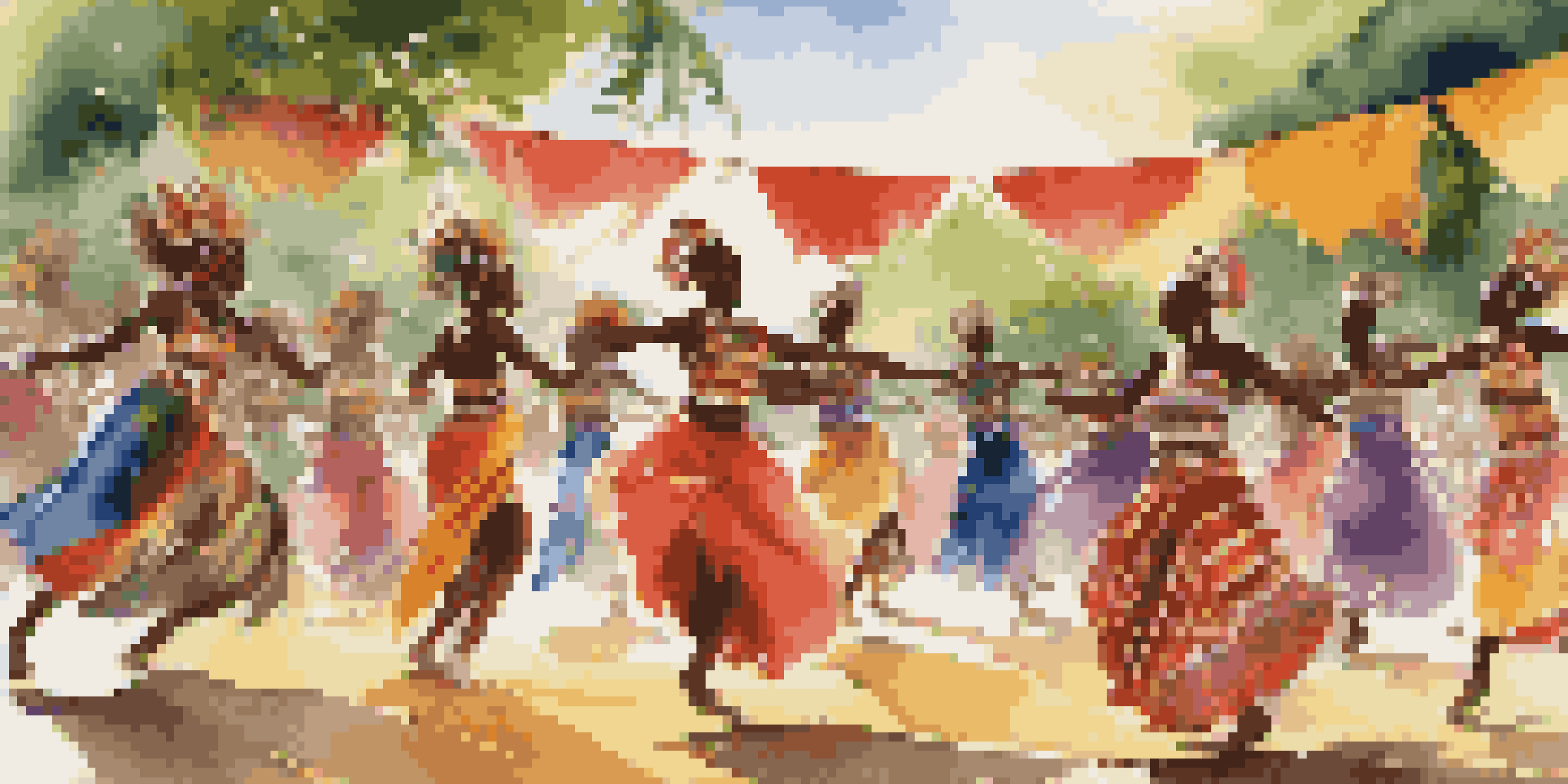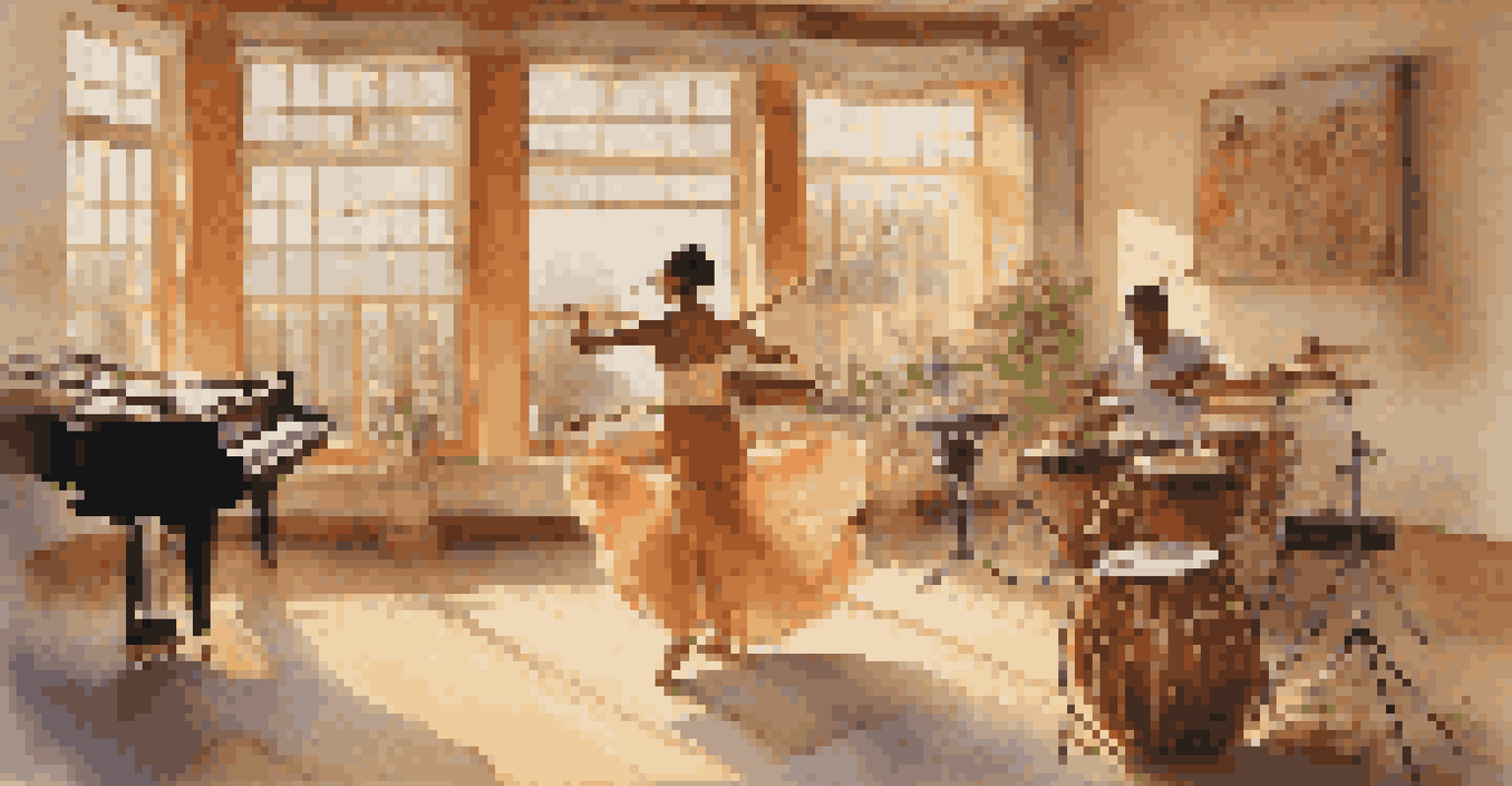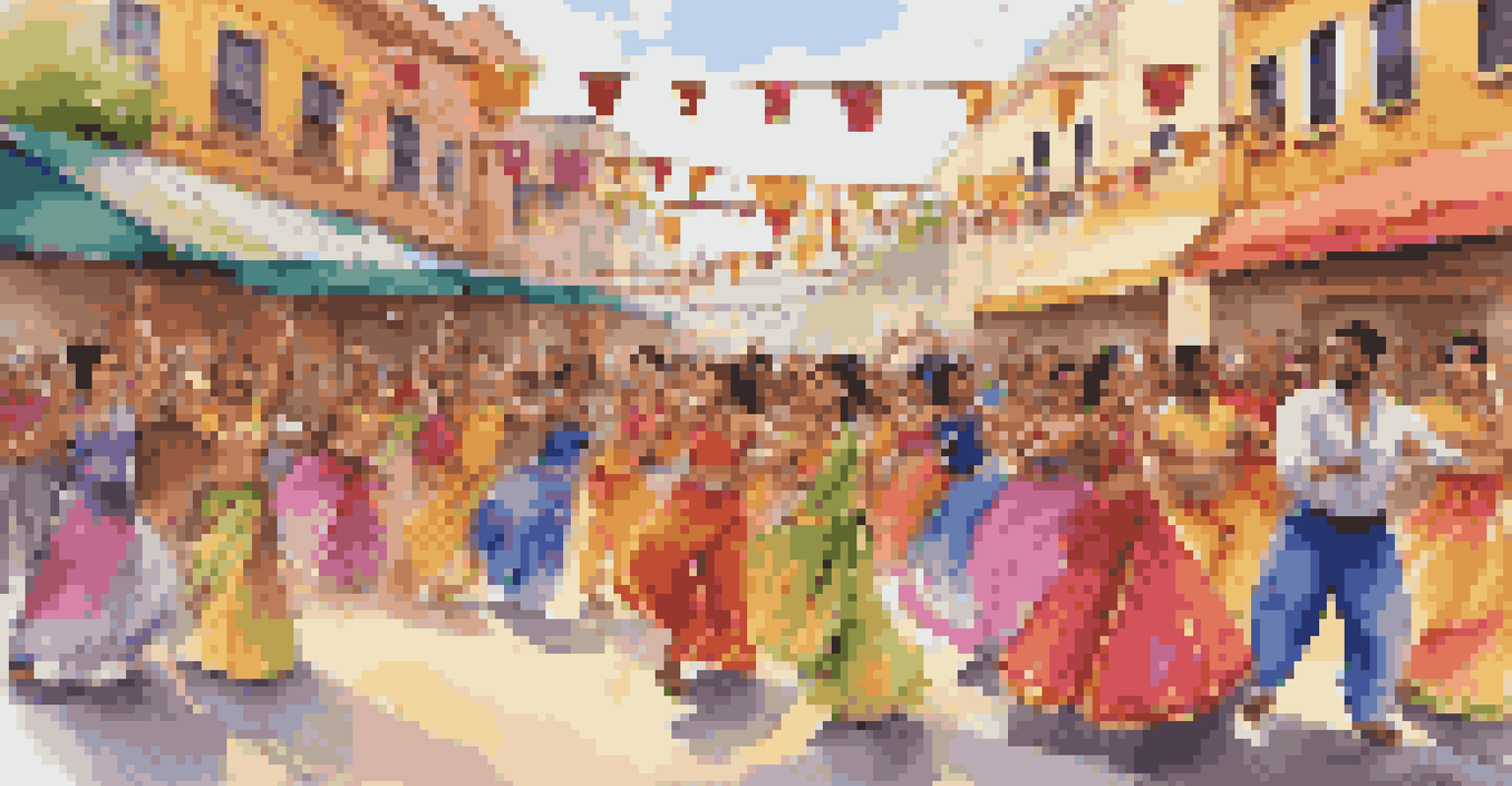The Influence of Traditional Music on Modern Dance Styles

Understanding Traditional Music and Its Roots
Traditional music often reflects the cultural heritage of a community, carrying stories and emotions through melodies and rhythms. This music, passed down through generations, forms the bedrock of many dance styles we see today. For example, the vibrant drumbeats of African tribal music have not only inspired modern dance forms but also influenced genres like jazz and hip-hop.
Music is the shorthand of emotion.
By examining these roots, we can appreciate how traditional sounds resonate in contemporary settings. The use of live instruments, vocal styles, and even dance movements often mirrors the traditions from which they emerged, creating a rich tapestry of cultural expression. This connection highlights the importance of preserving traditional music as it continues to evolve and inspire.
Furthermore, traditional music serves as a reminder of our shared human experience, bridging gaps between generations. As dancers embrace these sounds, they not only honor their heritage but also invite others to experience the joy and depth of their culture.
How Traditional Music Influences Dance Styles
Modern dance styles often borrow rhythms, melodies, and even movements directly from traditional music. For instance, the graceful forms of ballet can sometimes echo the lyrical qualities found in folk music. This blending of styles showcases the adaptability of dance as an art form and emphasizes the timelessness of traditional sounds.

Moreover, traditional music sets the emotional tone for various dance performances, enabling dancers to express deeper feelings. In styles like contemporary dance, the incorporation of folk tunes can evoke nostalgia, joy, or even sorrow, allowing performers to connect with their audiences on a profound level. This emotional connection is vital for storytelling through movement.
Traditional Music Shapes Dance Styles
Traditional music influences modern dance by providing rhythms and emotional depth that enhance storytelling through movement.
In essence, traditional music acts as a powerful catalyst for creativity within modern dance. Dancers and choreographers frequently explore these influences, creating innovative pieces that pay homage to their roots while pushing the boundaries of what dance can express.
Examples of Fusion Dance Styles
Fusion dance styles are a testament to the influence of traditional music on contemporary forms. For example, the popular dance genre of salsa incorporates elements of African, Spanish, and Caribbean music, creating an energetic and vibrant atmosphere. This blend not only showcases the diversity of cultural influences but also illustrates how dance can evolve through collaboration.
Dance is the hidden language of the soul.
Another example is the rise of Bollywood dance, which combines classical Indian dance forms with modern Western styles and music. The result is a dynamic and colorful expression that captivates audiences worldwide. This fusion highlights the adaptability of dance and the way traditional music can breathe new life into contemporary performances.
These fusion styles demonstrate that traditional music is not merely a relic of the past but a living, breathing influence on modern dance. By merging different cultures, dancers create unique experiences that resonate with people from all walks of life.
The Role of Technology in Modern Dance
Technology plays a significant role in how traditional music influences modern dance. With the rise of digital platforms, dancers and choreographers can easily access a vast array of traditional music from around the globe. This accessibility allows for greater experimentation and creativity, leading to innovative dance styles that blend various cultural elements.
Moreover, technology enables the recording and sharing of dance performances, helping to preserve traditional movements and music for future generations. Online tutorials and social media platforms provide dancers with the resources to learn and incorporate these traditions into their work. This exchange fosters a sense of community among dancers, regardless of geographical boundaries.
Fusion Dance Celebrates Diversity
Fusion dance styles blend traditional music with contemporary forms, showcasing the adaptability of dance and the richness of cultural influences.
As technology continues to evolve, so too will the relationship between traditional music and modern dance. The potential for collaboration and experimentation is limitless, paving the way for new styles that honor the past while embracing the future.
Cultural Significance of Dance and Music
Dance and music are integral to cultural identity, serving as expressions of community values and shared experiences. Traditional music often accompanies social and ceremonial dances, reinforcing cultural ties and fostering a sense of belonging. This connection is crucial in today’s increasingly globalized world, where cultural exchange can sometimes dilute local traditions.
By integrating traditional music into modern dance, artists can champion their heritage and educate audiences about its significance. This not only enriches the dance experience but also promotes cultural appreciation and understanding. Dancers become ambassadors of their cultural stories, bringing awareness to the richness of their backgrounds.
Ultimately, the marriage of traditional music and modern dance serves to celebrate diversity. It reminds us that while styles may evolve, the stories and emotions behind them remain timeless.
The Impact of Globalization on Dance and Music
Globalization has created a melting pot of cultures, significantly impacting the relationship between traditional music and modern dance. As artists travel and collaborate, they share their unique styles and sounds, leading to the creation of new genres and dance movements. This exchange enriches the global arts scene and encourages cross-cultural dialogue.
However, globalization also presents challenges, as local traditions can sometimes be overshadowed by more dominant cultures. It’s essential for dancers and musicians to remain aware of their roots and incorporate traditional elements into their work. By doing so, they can maintain authenticity while embracing innovation.
Technology Enhances Cultural Exchange
Advancements in technology allow greater access to traditional music, fostering creativity and collaboration in modern dance.
In conclusion, while globalization presents opportunities for collaboration, it also underscores the importance of preserving traditional music and dance forms. This balance allows modern artists to celebrate their heritage while contributing to the ever-evolving landscape of dance.
Future Directions: Embracing Tradition in Modern Dance
The future of modern dance is bright, with an increasing number of artists recognizing the value of traditional music. As dancers continue to explore their cultural roots, we can expect to see more innovative works that blend styles and genres. This trend not only highlights the adaptability of dance but also honors the rich tapestry of cultural histories.
Educational initiatives and community programs are also emerging, focusing on the importance of traditional music and dance. These programs encourage younger generations to engage with their cultural heritage, ensuring that these art forms remain vibrant and relevant. By fostering this connection, we can inspire a new wave of dancers who appreciate and respect their roots.

Ultimately, embracing tradition in modern dance allows for a richer artistic expression. As we move forward, the interplay between traditional music and contemporary dance will continue to evolve, creating a dynamic landscape that celebrates both the past and the future.